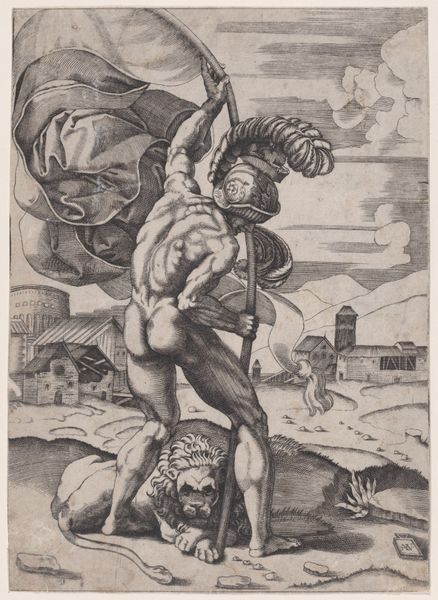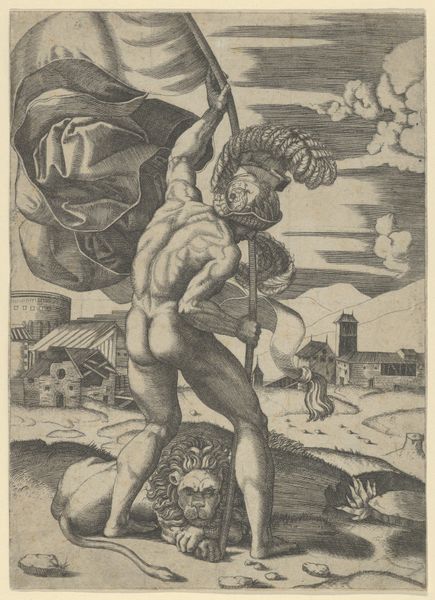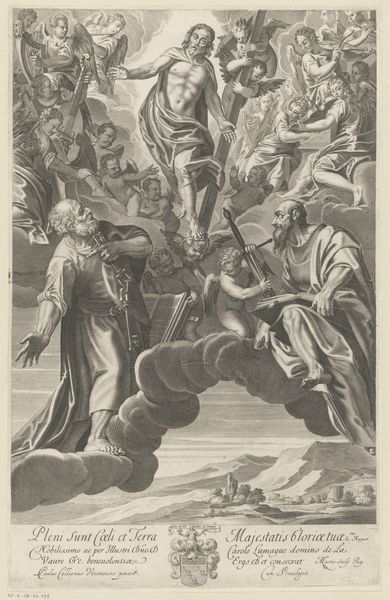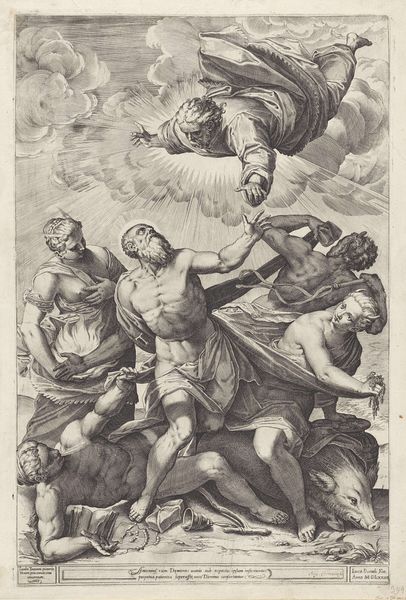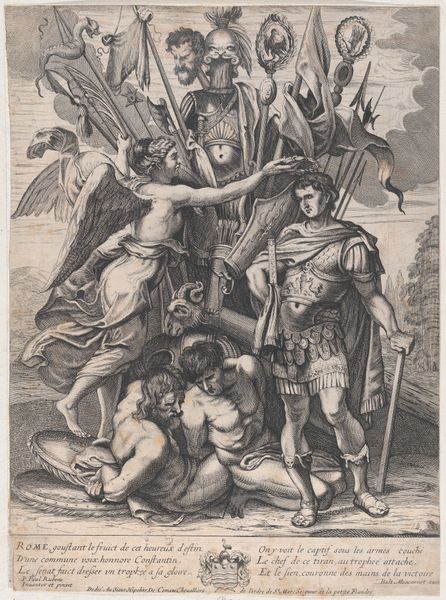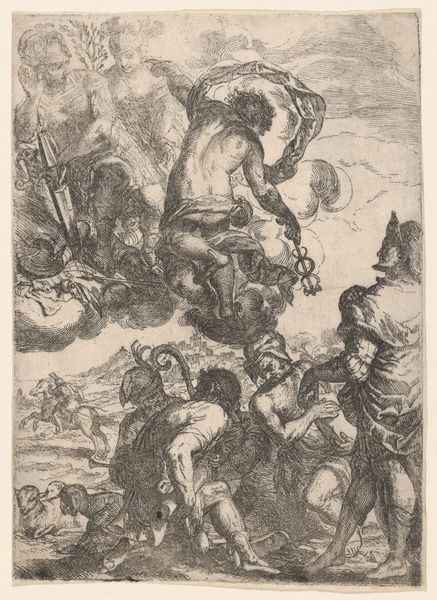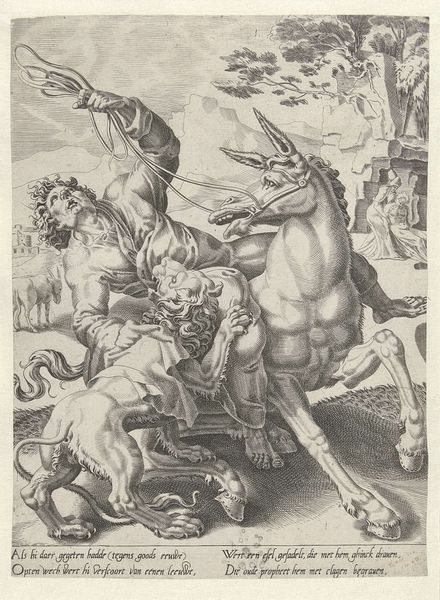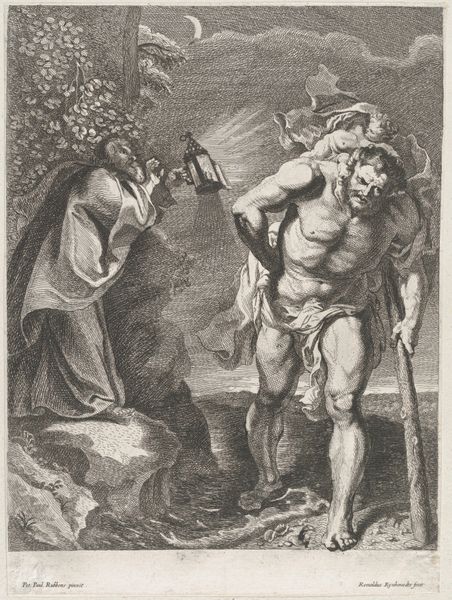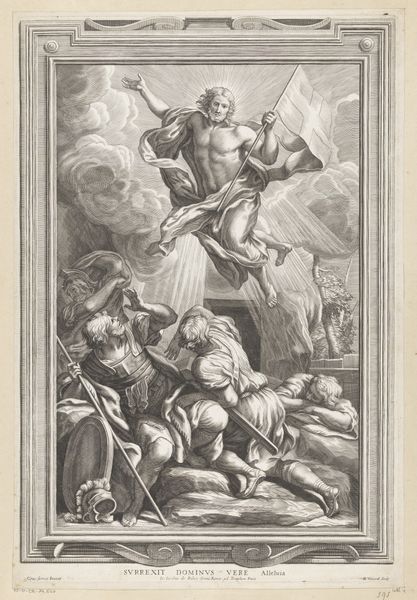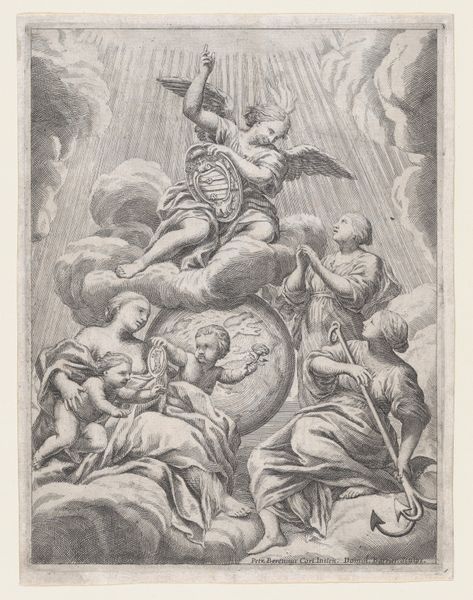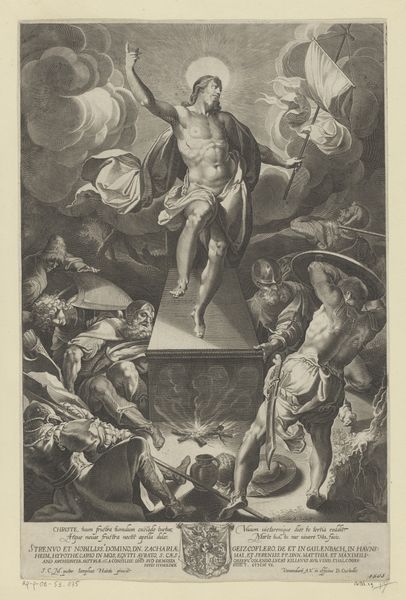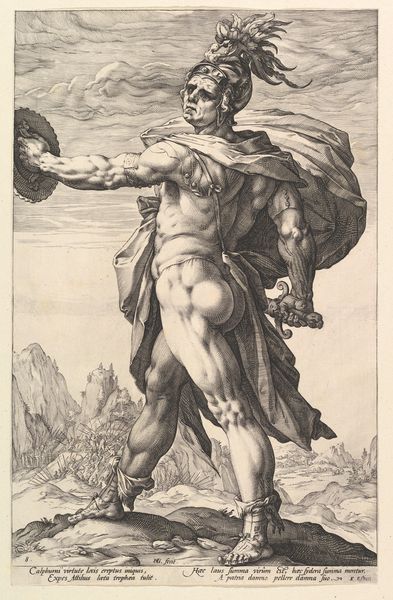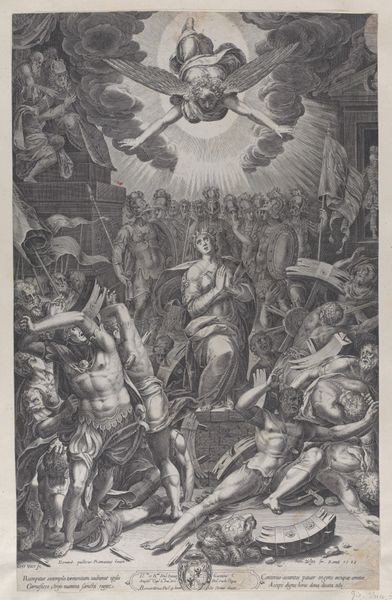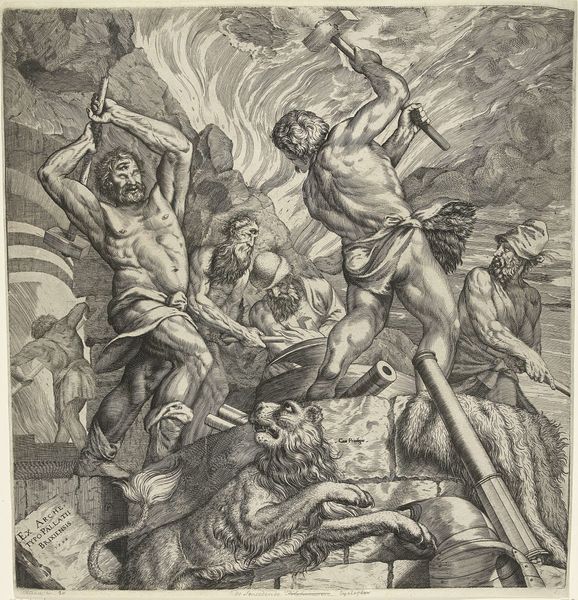
Joshua bidding the sun to stand still 1705 - 1730
0:00
0:00
drawing, print, engraving
#
drawing
#
baroque
# print
#
figuration
#
form
#
line
#
history-painting
#
engraving
Dimensions: Sheet (Trimmed): 15 3/4 × 11 7/16 in. (40 × 29.1 cm)
Copyright: Public Domain
Editor: Here we have "Joshua bidding the sun to stand still," an engraving by Hieronymus Ferroni, dating roughly between 1705 and 1730. I am really struck by the dramatic use of line and the sense of implied movement. How would you interpret this print? Curator: I see the meticulous detail achieved through the engraving process. Consider the labor invested in creating this print; each line meticulously etched, not merely depicting a biblical scene, but also serving as a testament to the craftsman's skill and the social value placed on detailed replications of historical events for broad dissemination and, indeed, ideological impact. What relationship exists between manual skills and religious narrative in this piece? Editor: I suppose it elevates the importance of the story… almost legitimizes it through the demonstration of craft? Do you think the act of mechanically reproducing it has an impact? Curator: Absolutely. The reproduction diminishes the aura, perhaps, but then we ask: whose aura, and to what end? Printmaking makes images like these accessible to wider audiences than paintings, influencing a population and driving sales through dissemination. How does this change of consumption affect traditional ideas of artistry? Editor: That's fascinating. I hadn't considered the commercial and political context of the engraving itself as a material object, just the subject matter. So the method of creation almost *becomes* part of the meaning. Curator: Precisely! And by understanding that context, we challenge hierarchical views on skill, originality, and accessibility in relation to art. We may move beyond an image’s subject to what role materiality performs in producing and spreading narratives. Editor: This reframes how I approach artworks. It pushes me to consider not just the “what” but also the “how” and “why” of its creation and consumption.
Comments
No comments
Be the first to comment and join the conversation on the ultimate creative platform.
